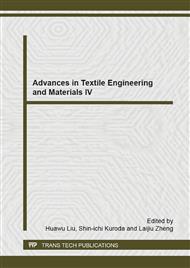p.483
p.489
p.493
p.498
p.503
p.507
p.511
p.515
p.521
Study on the Advanced Treatment of Dyeing Wastewater by Photocatalytic-H2O2
Abstract:
The composition of dyeing wastewater is complicated, after biochemical treatment, the effluent COD is still unable to meet the emission standard. To achieve discharge standard that often require advanced treatment after biochemical. This paper investigated effect of pH, reaction time, ZnO dosage, dosage of H2O2 on the effect of dyeing wastewater treatment by photocatalytic-H2O2, the results showed that the reaction time of 15 min, pH of 4, dosage of ZnO was 4 g/L, 30% H2O2 dosage was 1 ml/L, the COD removal rate was highest, can reach more than 55%.
Info:
Periodical:
Pages:
503-506
Citation:
Online since:
October 2014
Authors:
Price:
Сopyright:
© 2014 Trans Tech Publications Ltd. All Rights Reserved
Share:
Citation:


